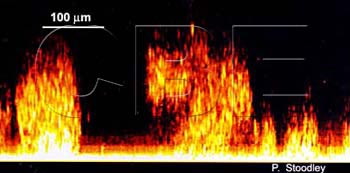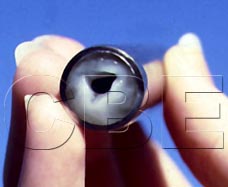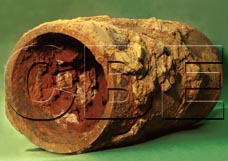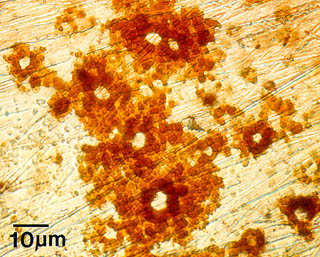Biofilm strategies: Building communities

Confocal Scanning Laser Microscopy (CSLM) of a sagittal section of a three-species biofilm P. aeruginosa, P. fluorescens, and K. pneumoniae grown on a glass slide. The variety of structures and thicknesses is characteristic of biofilm formation. Courtesy, P. Stoodley, D. deBeer and ASM Microbe Library.
Practical Implications
Bacterial biofilms are remarkably heterogeneous in virtually all parameters that can be measured accurately and reproducibly. These heterogeneities: structural, physiological, ecological, electrical, etc., have been implicated as the cause of many phenomena characteristic of the attached mode of growth and frequently less intensive or nonexistent in planktonic cultures.
 |
 |
|
|
Cross-section view of a stainless steel tube coated with thick, healthy biofilm. Courtesy, N. Zelver
|
Badly corroded pipe from a water distribution system. Courtesy, C. Abernathy & A. Camper
|
One of the costly consequences of microbial colonization on metal surfaces is Microbially Influenced Corrosion (MIC). The presence of microorganisms modifies deposition and dissolution rates of minerals, and by this mechanism, influences the electrochemical properties of the metals or alloys. Pitting corrosion results from this activity.

Microscopic view of microbially influenced pitting corrosion on stainless steel. Courtesy, W. Dickinson & Z. Lewandowski
Detrimental biofilms
A table summarizes the many systems in which biofilms form with undesirable consequences.

